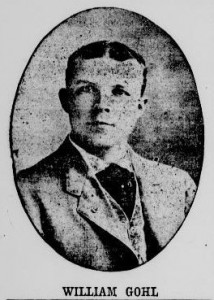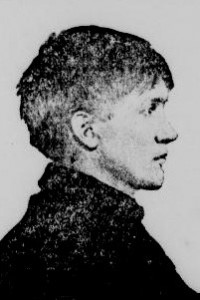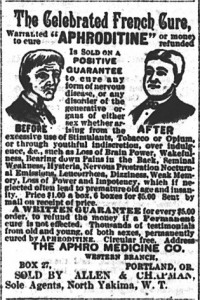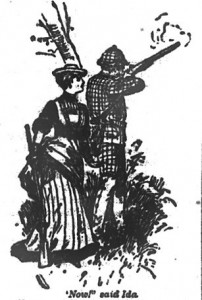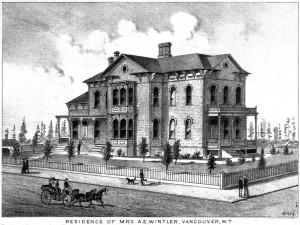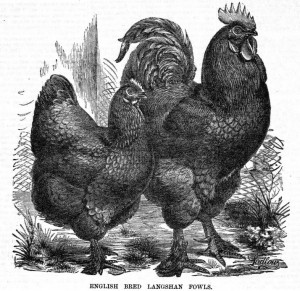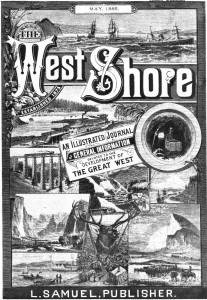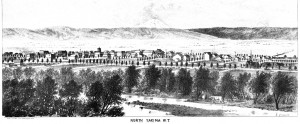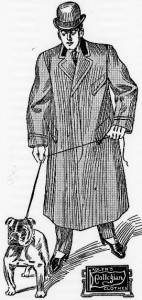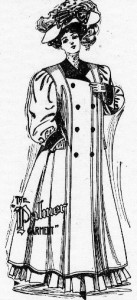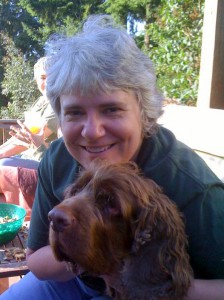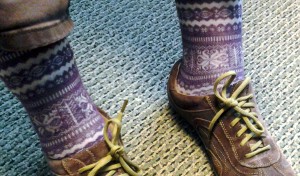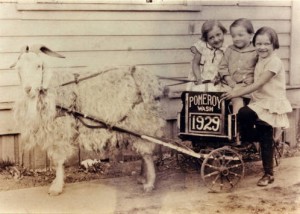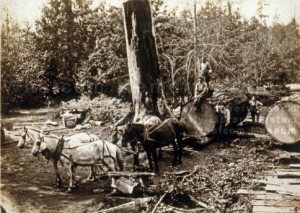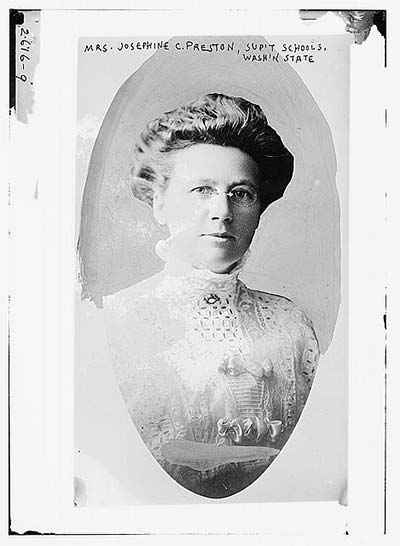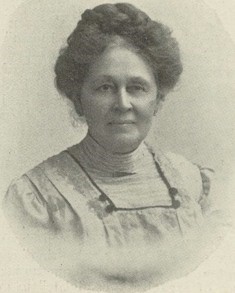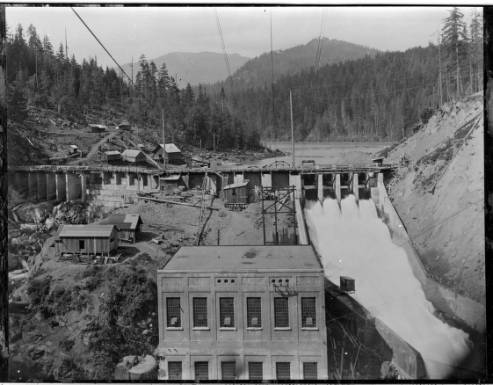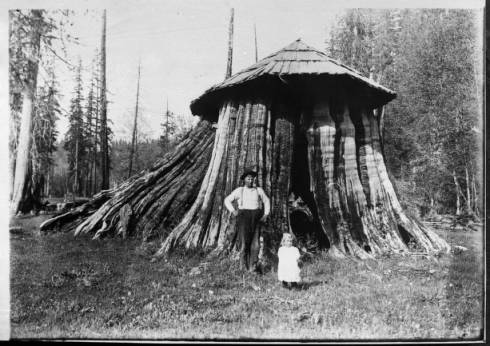From the desk of Marlys Rudeen
One of the most notorious citizens of Aberdeen in the early 20th century was William Gohl. While he might have listed his occupation as agent for the Sailors’ Union of the Pacific, his real job included such duties as graft, theft, extortion, arson, and murder. The local paper, the Aberdeen Herald, documents some of Gohl’s history through his trial and conviction for two murders in 1910.
You can follow the story through the newspaper by going to the Chronicling America web site for the Herald choosing the Browse Issues link, selecting a year from the drop down box, and then choosing an issue from the calendar display. I’ve listed some of the dates and pages below.
Popular wisdom in Aberdeen credited Gohl with a much higher body count than the two murders for which he stood trial. Most were convinced he was responsible for most of the “floater fleet” of bodies found in the harbor and the Wishkah River over a decade. He was widely thought to kill and rob sailors reporting in to the Union office if he judged that no one would miss them, helping himself to their valuables at the same time. Anyone who crossed him might find their business burned down, or find themselves on trial with Gohl’s cohorts swearing that he was guilty. Conversely whenever anyone was brave enough to charge Gohl with a crime, those same cronies provided him with sturdy alibis.
Aug. 23, 1909, p. 1
One such case was that of a local saloonkeeper, Sig Jacobson, who was accused of illegally selling liquor on Sunday. The case had to be tried three times before a guilty verdict was reached, the first two having ended in hung juries. The paper opines that “The fact that Wm. Gohl, the unsavory agent of the Sailors’ Union was pushing the prosecution accounts in a measure for the disagreements of the first two juries..” The assumption was that the case had been brought through personal enmity.
Feb. 3, 1910, p. 1
The story of his downfall begins on Feb. 3, 1910. The headline on the front page is “Accused of Double Murder – William Gohl, Agent of the Sailors’ Union is Accused of Killing Two Men.” The article details his arrest for the double murder of John Hoffman and Charles Hapgood. (As the story develops Hapgood’s name is spelled in a variety of ways – Hatgood, Hedberg, Hatberg, etc.) According to the article the tale is “filled with gruesome, cold-blooded particulars.” Police have gathered the information from a former friend of Gohl’s whom they refuse to identify. The cause of the alleged murder is said to be Gohl’s fear that Hapgood, a long-time crony, knew too much about some of his activities, and might turn against him. The body of one of the men, Hapgood, has been found, the authorities are still searching for the second, that of John Hoffman.
Feb. 7, 1910, p. 1
Now the paper feels free to report that Gohl is “suspected of many crimes” and rumors abound: he is responsible for a large number of the ‘floaters’ found in the harbor; leaving 4 non-union sailors to drown in the rising tide on an isolated spit; arson; recruiting toughs to testify on his behalf and provide alibis if necessary. “For the past three or four years Gohl has had the people of the water front terrorized with his threats and known ability to make them good…” Many of the rumors of Gohl’s crimes were started by Gohl himself as part of his campaign of intimidation.
Over the next several issues the search for Hoffman continues, the officials consider calling a Grand Jury – the first in 26 years.
Apr. 7, 1910, p. 1-2
The story continues with further details of the case. The police originally went looking for Hatberg’s body on information from a “well-known businessman” whom they still refuse to identify. However his account has now been supported by testimony from John Klingenberg, a young Norwegian sailor, who had shipped out to Mexico a few days after the murders. On his return he is arrested and confesses to committing the murders with Gohl and on his orders. Klingenberg’s confession is printed on p. 2.
After that there are a few small stories, usually on p. 4 about preparations for the trial.
May 2, 1910, p. 1, 4
The trial begins with jury selection and a review of the case and the persons involved.
May 5, 1910, p. 1
The jury is chosen and the actual trial begins in Montesano.
May 9, 1910, p. 1
Witnesses present damning testimony about the events and as to the identification of the body as Charles Hadberg. Part of the evidence for the body’s identity is a section of embalmed skin that bears a tattoo recognized as belonging to the victim. (Yes, there’s a picture of the skin on the front page of the May 9, 1910 issue.)
Gohl evidently made a habit of bragging about his crimes, perhaps for the intimidation value, but he left many witnesses to testify to his claims of killing Hadberg and Hoffman. The original witness whom the police had not identified is now revealed to be P. J. McHugh, former owner of the Grand Saloon where Gohl and his cronies were frequent customers.
May 12, 1910, p. 1, 4
After 10 hours of deliberation, the jury comes back with a guilty verdict and a recommendation for leniency in sentencing. That recommendation was reported to be part of a compromise for the jury, allowing those who wanted to vote for murder in the second degree to vote for murder in the first without the death penalty. The defense witnesses had taken little time and Gohl’s only attempt at an alibi was from an Aberdeen carpenter “said to be mentally deficient.”
It seems as though all the fear and intimidation Gohl had banked ran out of steam. The case was perceived as strong enough, and Klingenburg’s testimony damning enough, that witnesses were willing to risk coming forward and adding their testimony to the whole. On the other hand, witnesses that were expected to testify for the defense – such as Mrs. Gohl’s brother, failed to materialize. Leaving the defense attorneys little option but to charge that the prosecution was politically motivated by “interests” in Gray’s Harbor.
May 16, 1910, p. 1
Gohl announces that he may appeal the case on the grounds that: the wording of the charge (written before Klingenburg’s confession and not amended afterwards,) indicated that Gohl held the pistol that killed Hadberg Part of Klingenburg’s confession was his admission that he had shot Hadberg while in fear that Gohl would shoot him if he refused.
The paper also raises issues of the conduct of authorities in the investigation, conflicts between the County Sheriff and the Aberdeen City Police, with the paper seeming to intimate that the City police were not wholehearted in their pursuit of Gohl.
May 19, 1910, p. 1
There is still talk of appeal as the date for sentencing approached, and one of Gohl’s former cronies, Lauritz Jensen, known as “The Weasel,” is released from the county jail. He had talked freely while incarcerated about Gohl’s various crimes – bombings, robbery and the theft of building materials. The paper takes a dim view of his release.
May 26, 1910, p. 1
Gohl is sentenced to life imprisonment, and the paper quotes extensively from the Judge’s decision, listing his reasons for the sentence. It is considered improbable that any appeal will be made, and Gohl is scheduled to be moved to the penitentiary in Walla Walla within a week.
Gohl spent the rest of his life incarcerated, first at the penitentiary and finally at the Eastern State Hospital in the ward for the criminally insane. He died there in 1927. Various sources place the count of his murders at anywhere from 40 to over 100.
The Aberdeen Herald was digitized through a grant from the National Endowment for the Humanities under the National Digital Newspaper Program. The Herald and many other American newspapers can be found online at Chronicling America at the Library of Congress.
Additional newspapers for Washington can be found at Historic Newspapers at the Washington State Library’s web site. The State Library is a Division of the Office of the Secretary of State.






